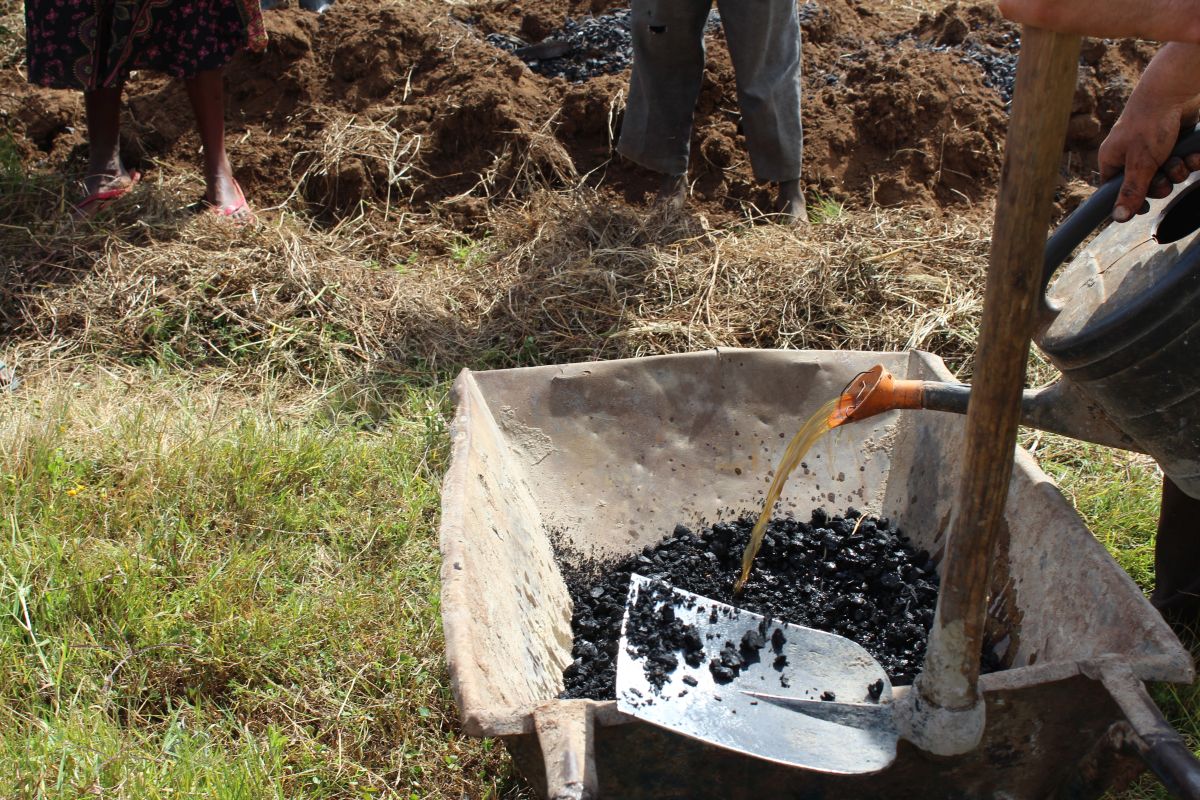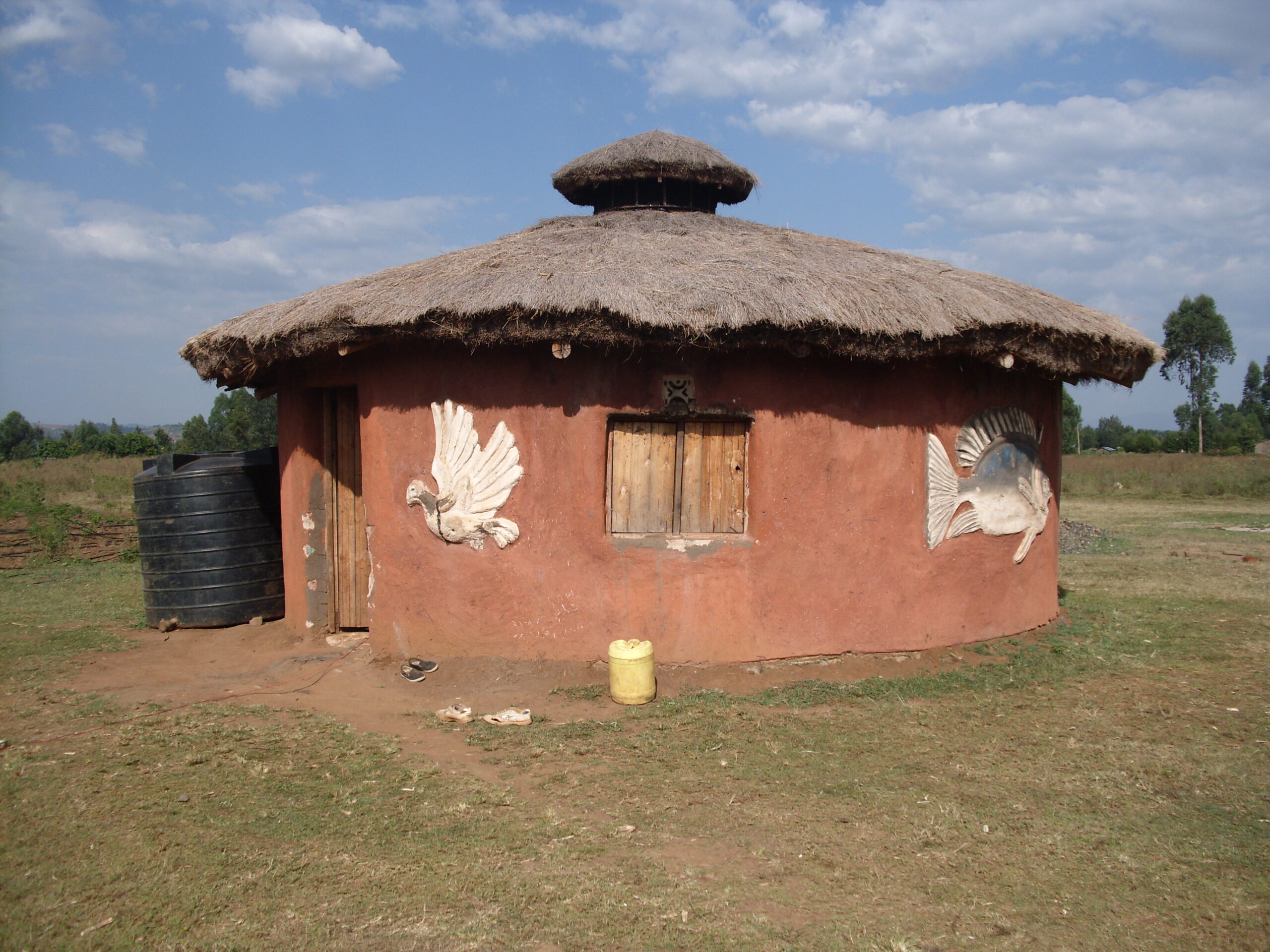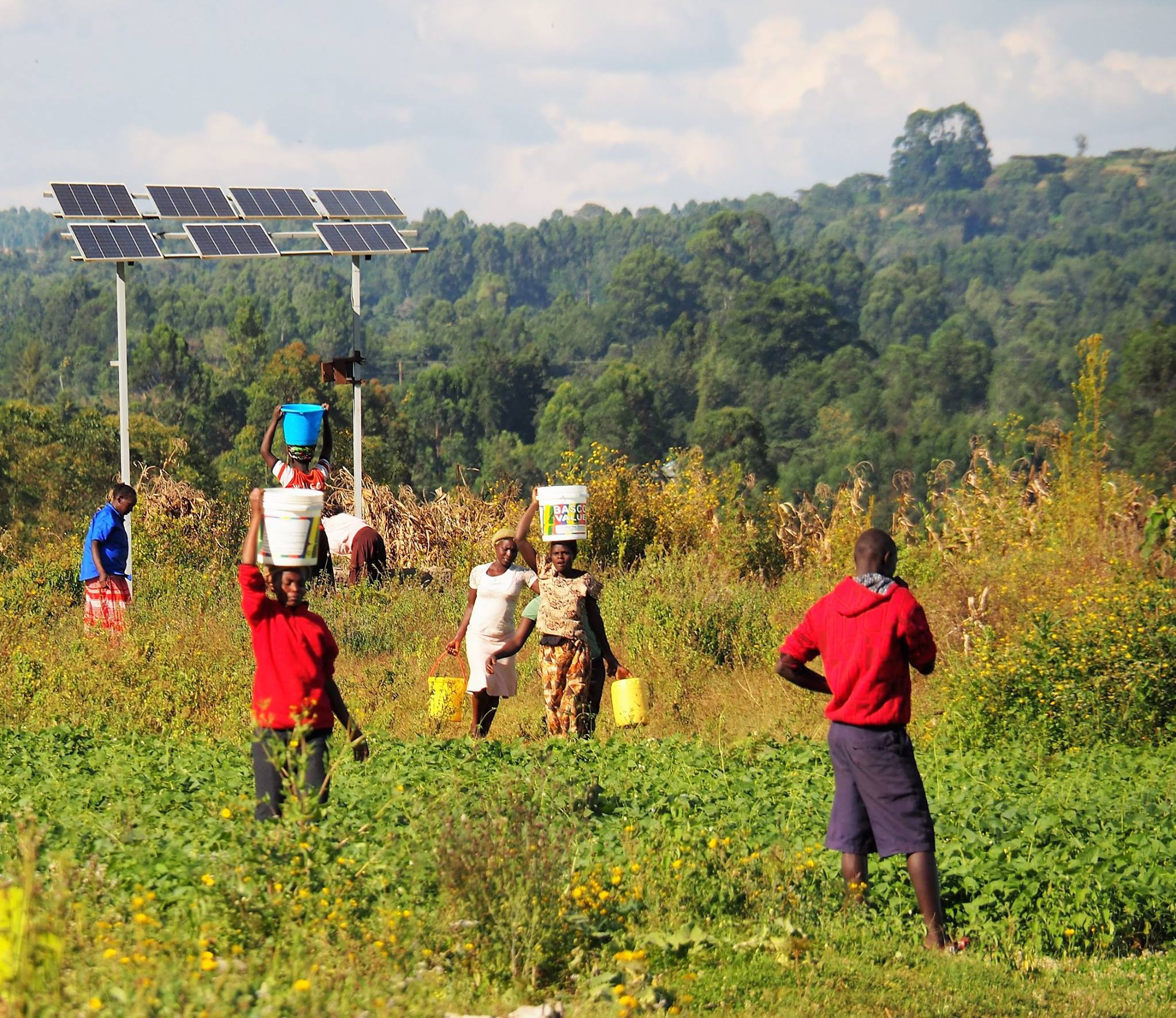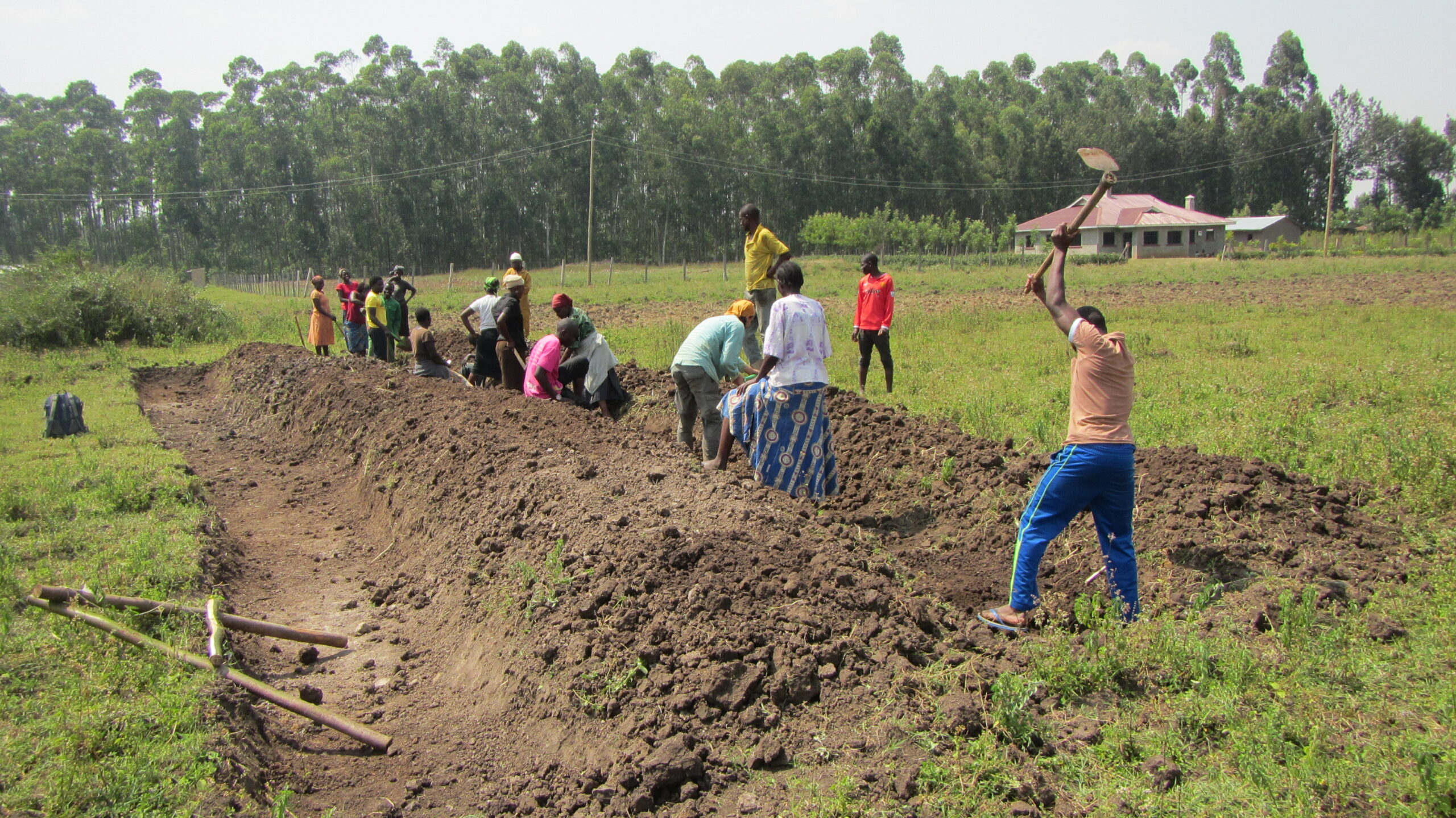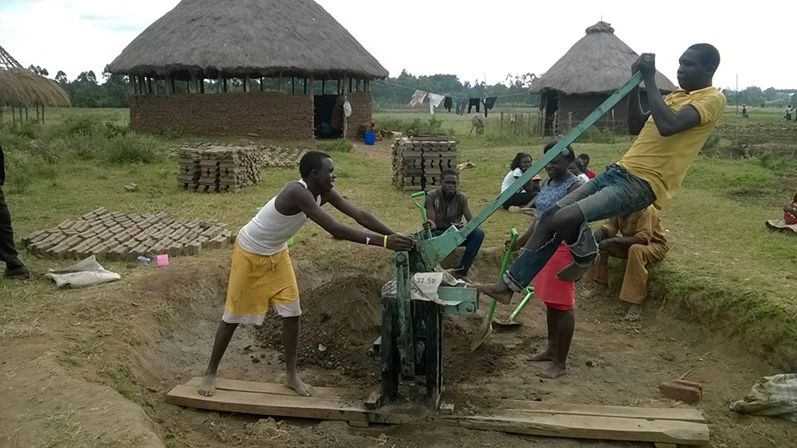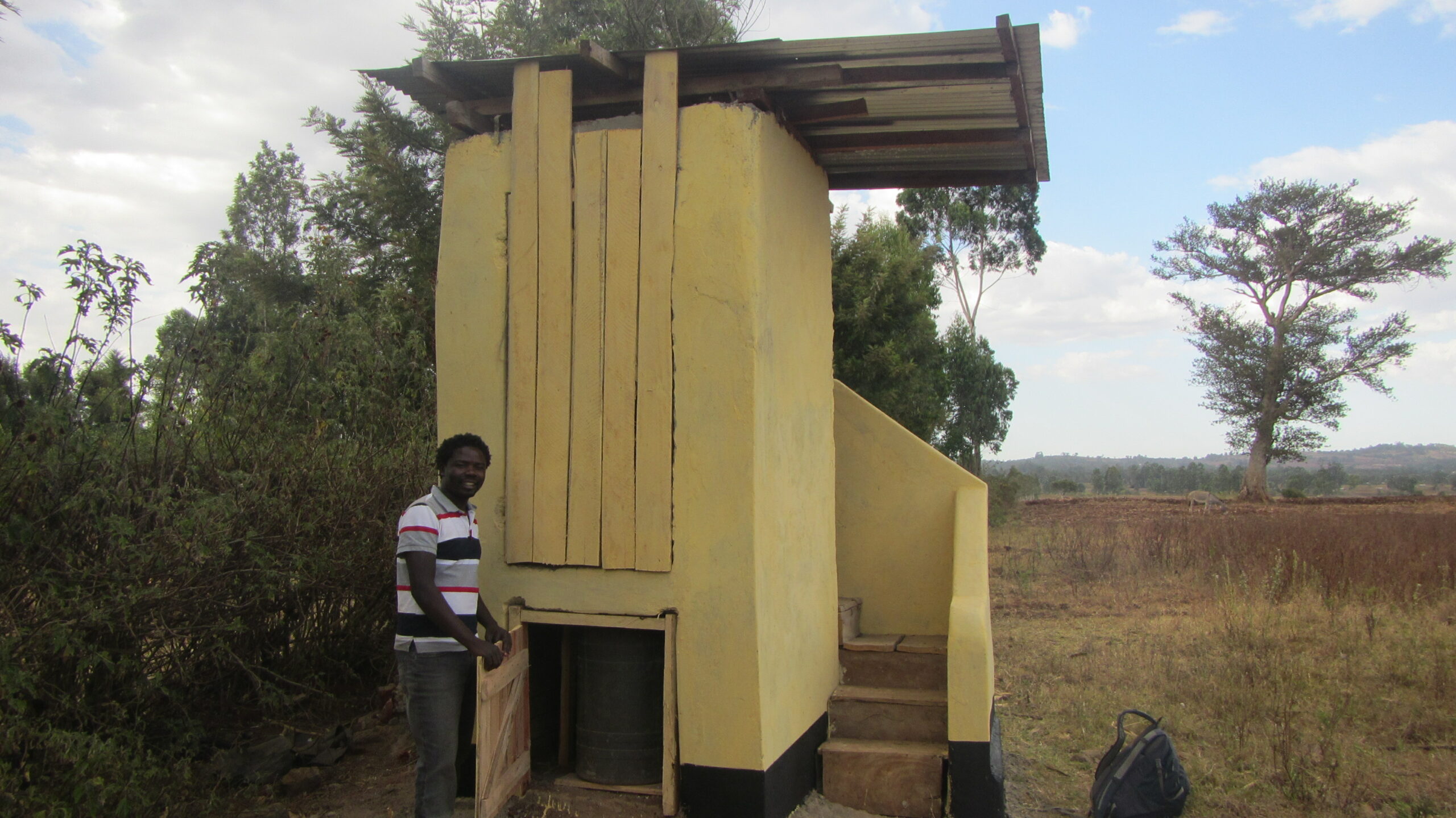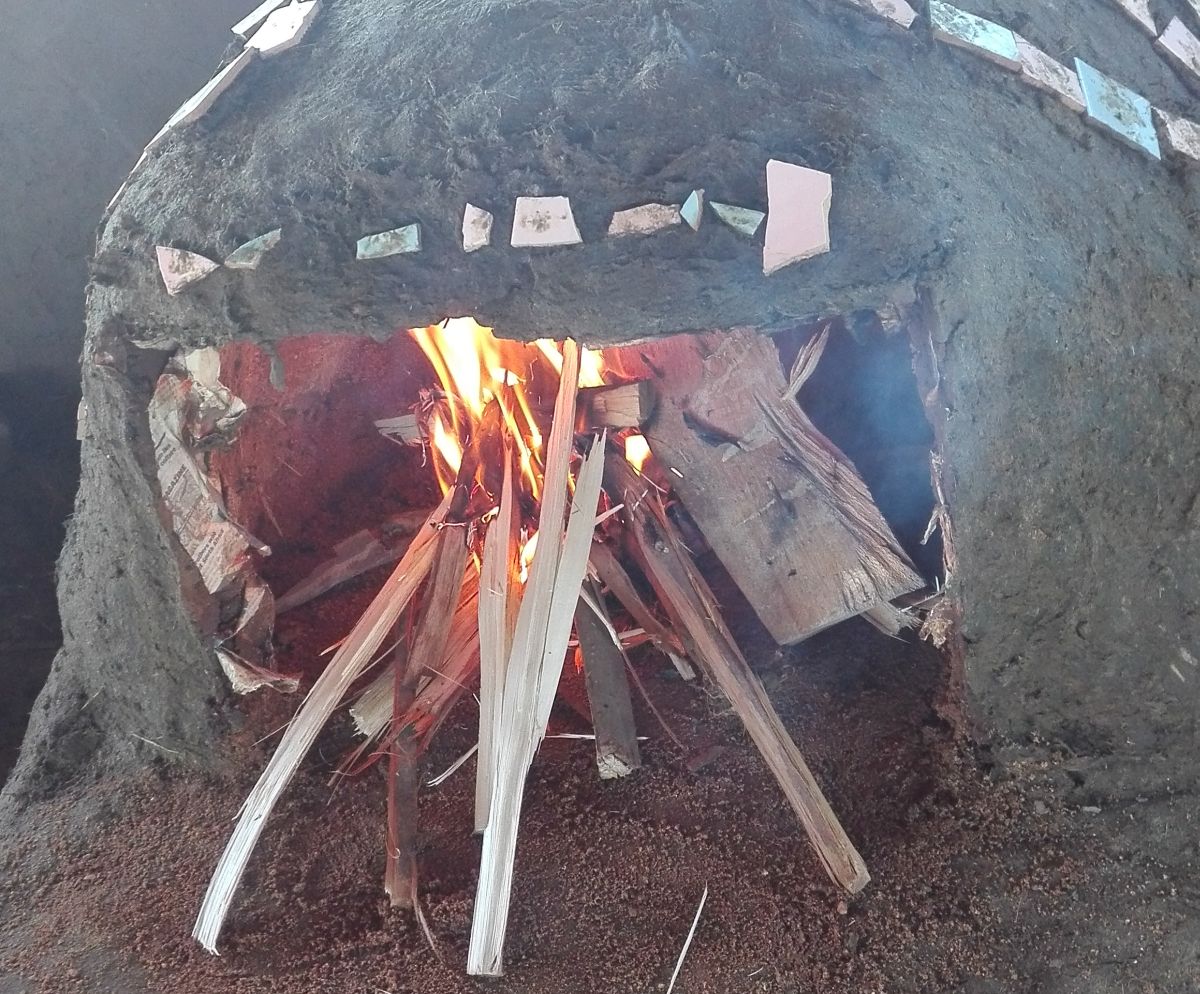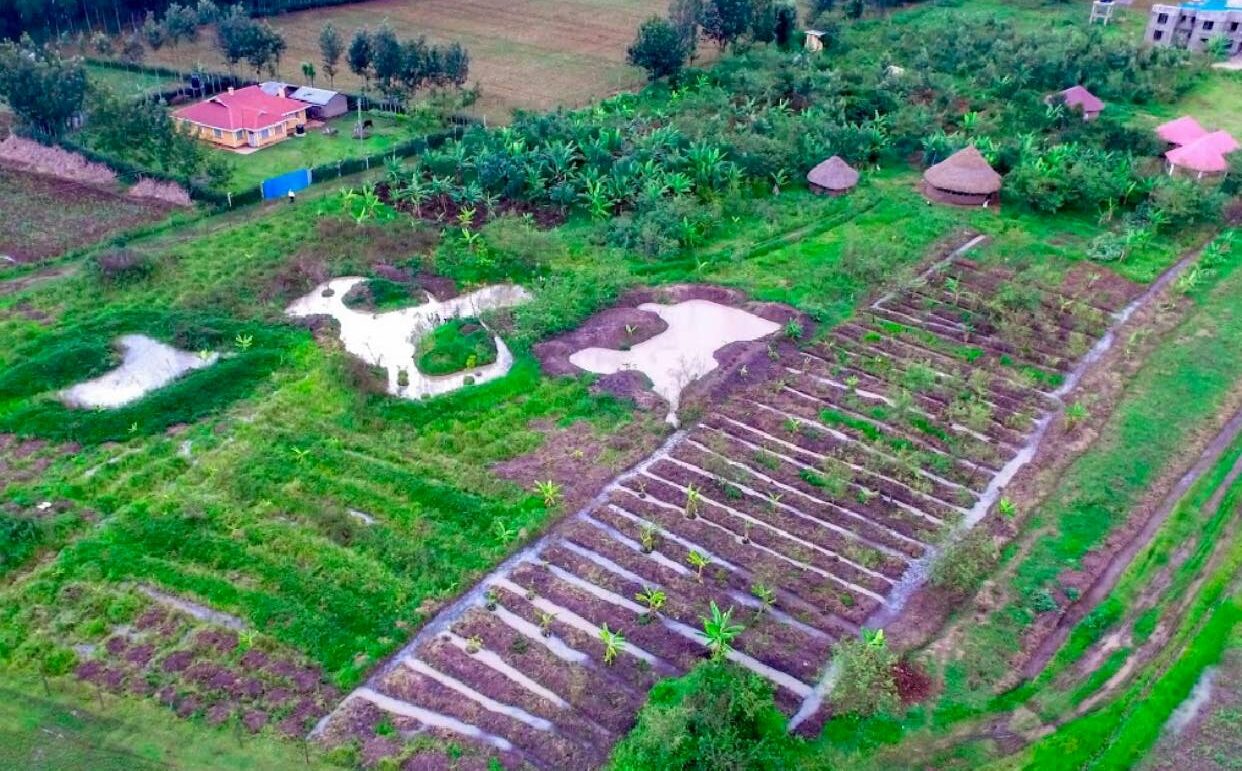
Sabwani Garden/Upendo garden
The 10 ha plot was acquired in 2013/2014. At that time it was an intensively used arable land. OTEPIC created a drinking water well on the fallow land, planted trees, created gardens, dug ponds and built huts. A self-sustaining peace village with a conference center, which will be used as a permaculture school for Kenya and East Africa, is under construction. A self-sufficient energy supply by photovoltaics is also planned.
Animals such as sheep, donkeys, bees, chickens and fish are also kept and mushrooms are grown.
Women’s groups and the OTEPIC team cultivate the land according to permaculture principles.
The Sabwani River flows directly past the Sabwani Garden, giving it its name. Sometimes the name “Upendo” = “love” is also used for this garden.
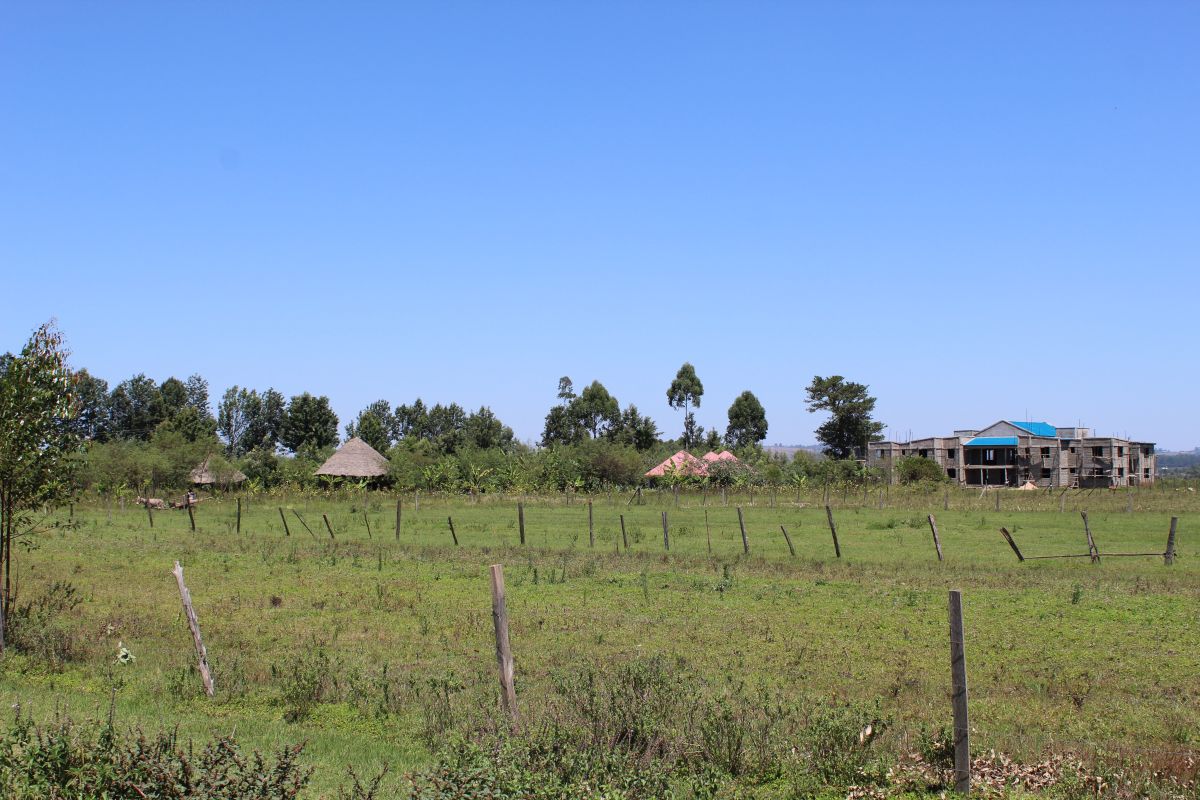
Women’s groups
Women’s groups meeting regular in the Sabwani Garden.
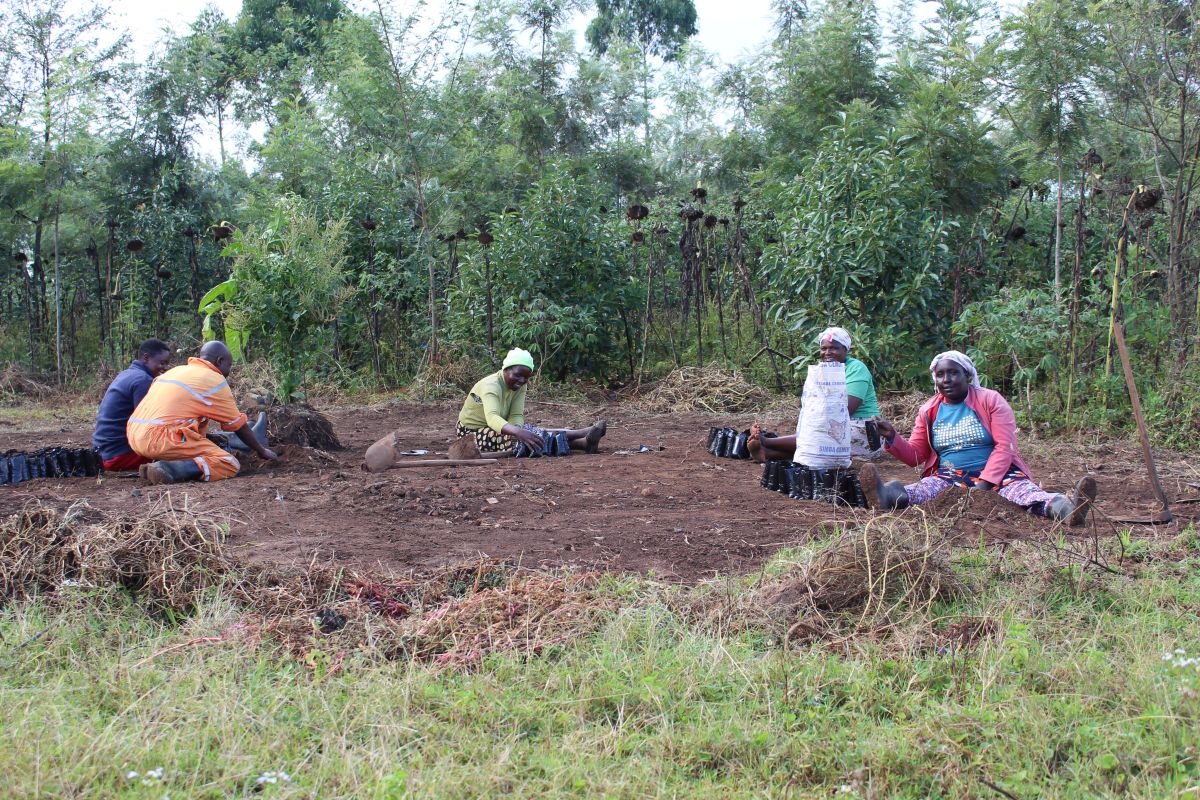
Gardening
OTEPIC team members working in the garden.
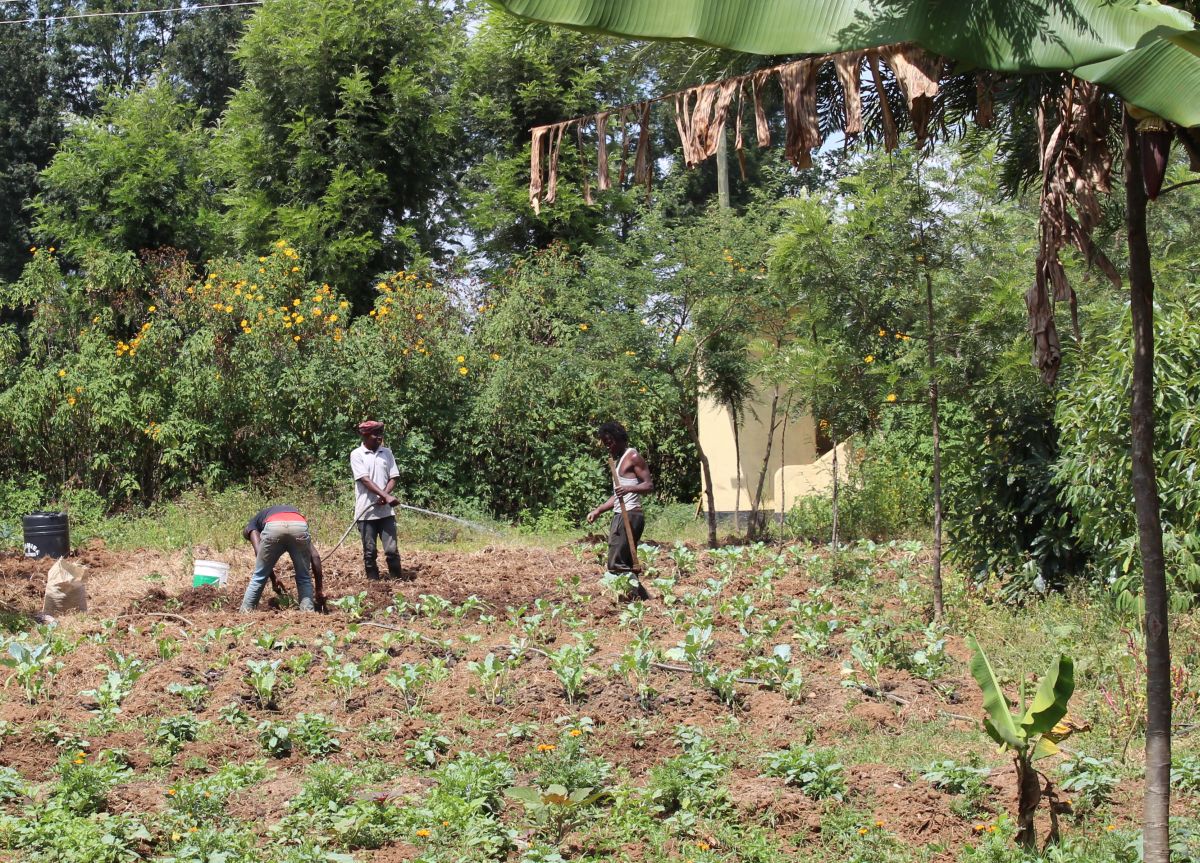
Huts
On the property were built huts in traditional construction. These have the traditional round shape of the country and are covered with grass. For the construction of the first hut, called “Peace Hut”, plastic foils were recycled. So far there are four huts in Sabwani.
Tree planting
Parallel to the huts, trees were planted, including avocado. They provide shade, improve the microclimate and provide habitat for birds and flying foxes.
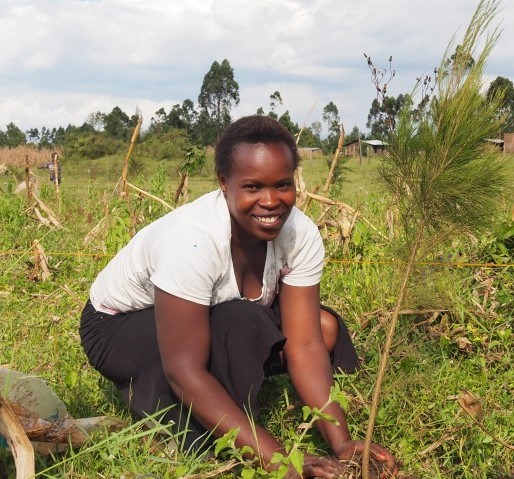
Animals
Bees, fish (in the ponds), chickens and sheep are kept. The donkeys are allowed to spend their twilight years in freedom at OTEPIC. It is a win win situation. The animals are fertilizing the area.


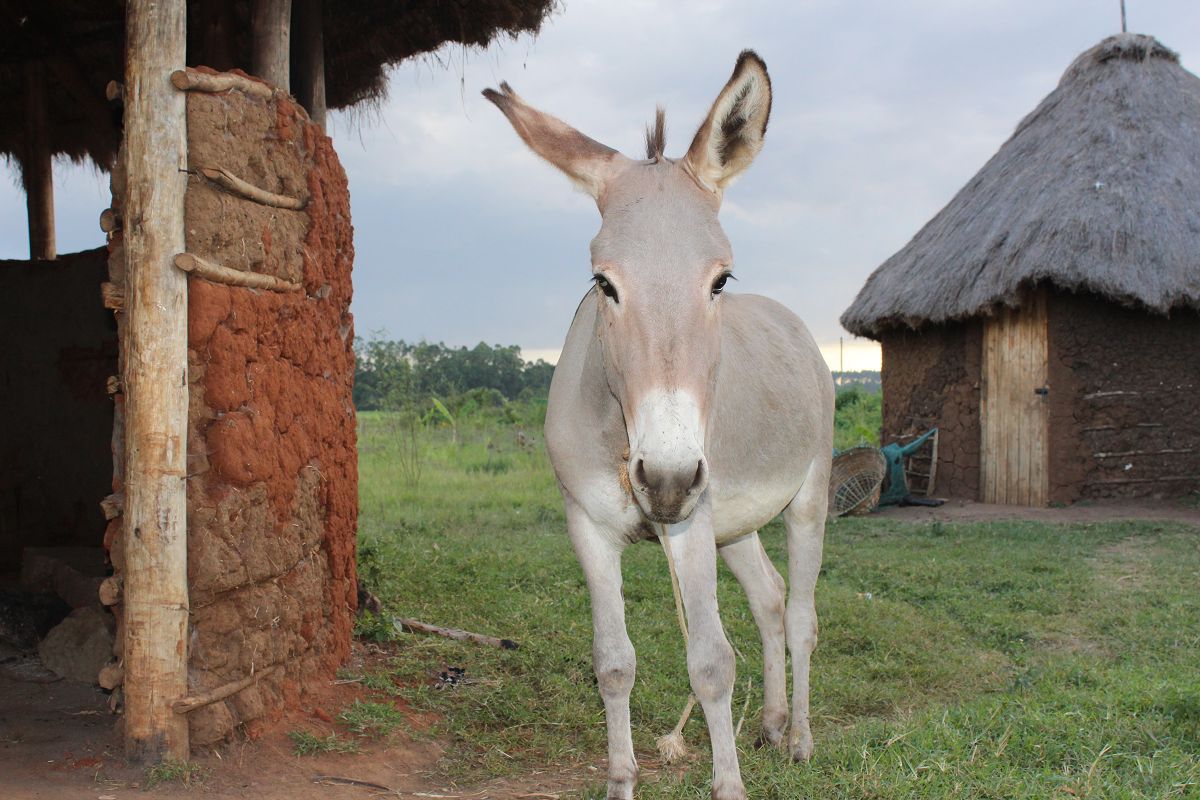
Clean and renewable funded drinking water
A borehole was also created (as in the Amani garden). The groundwater pumping system is 100m deep. The water pump is powered by photovoltaics. A water tank ensures that water is available even after sunset.
The water is used to water the garden and to supply the peace village. Furthermore, the people living in the surrounding villages receive clean drinking water free of charge.
Ponds
In 2016 the first pond was dug, so far three ponds have been created. During the rainy season, the clayey soil was compacted several times by tamping.
The ponds retain their water all year round, even during the dry seasons. During the rainy seasons, the ponds are flooded by high water. Edible fish have settled in and are visibly enjoying themselves. Bats use this “Little Venice” area to hunt insects.
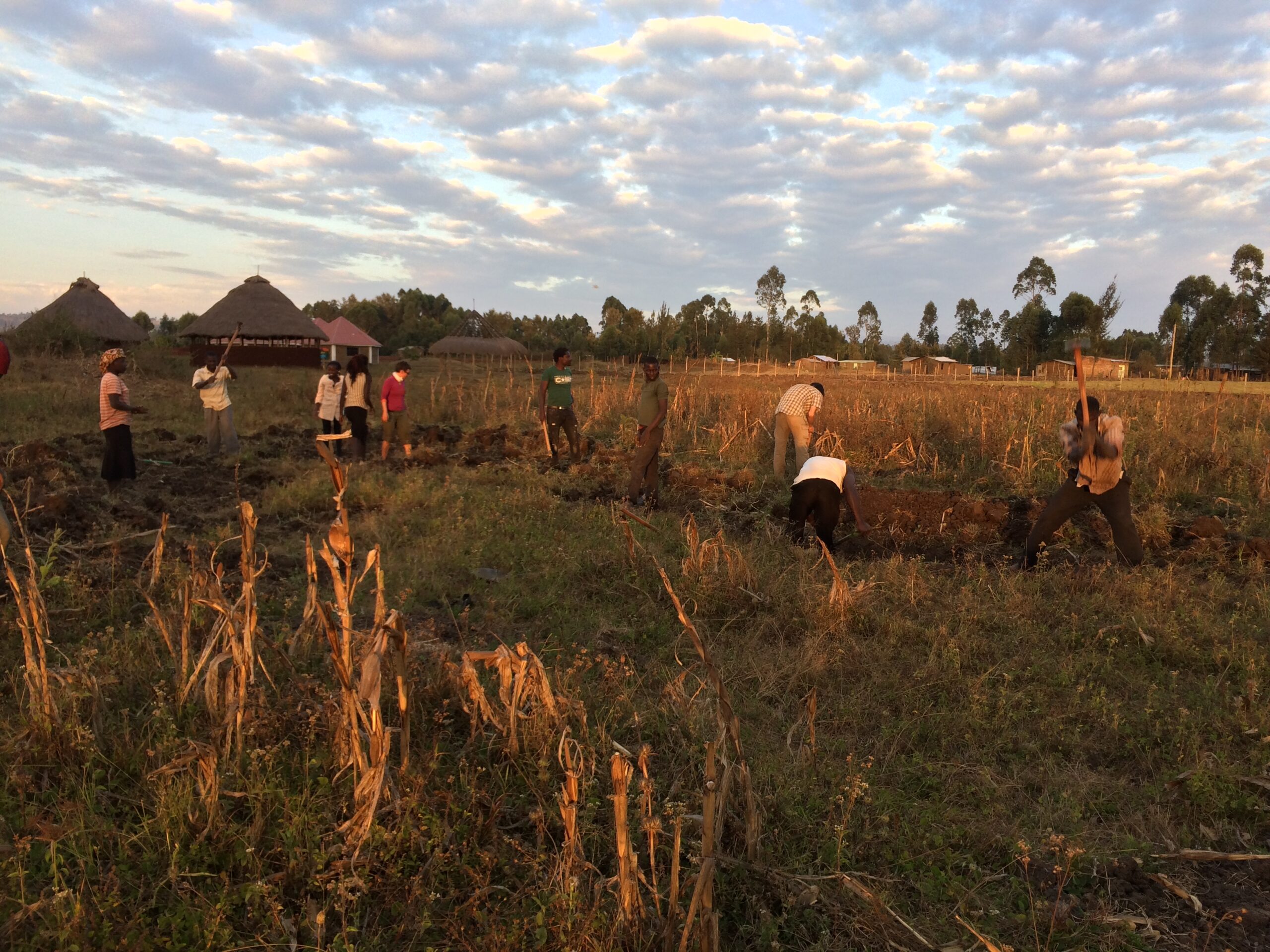
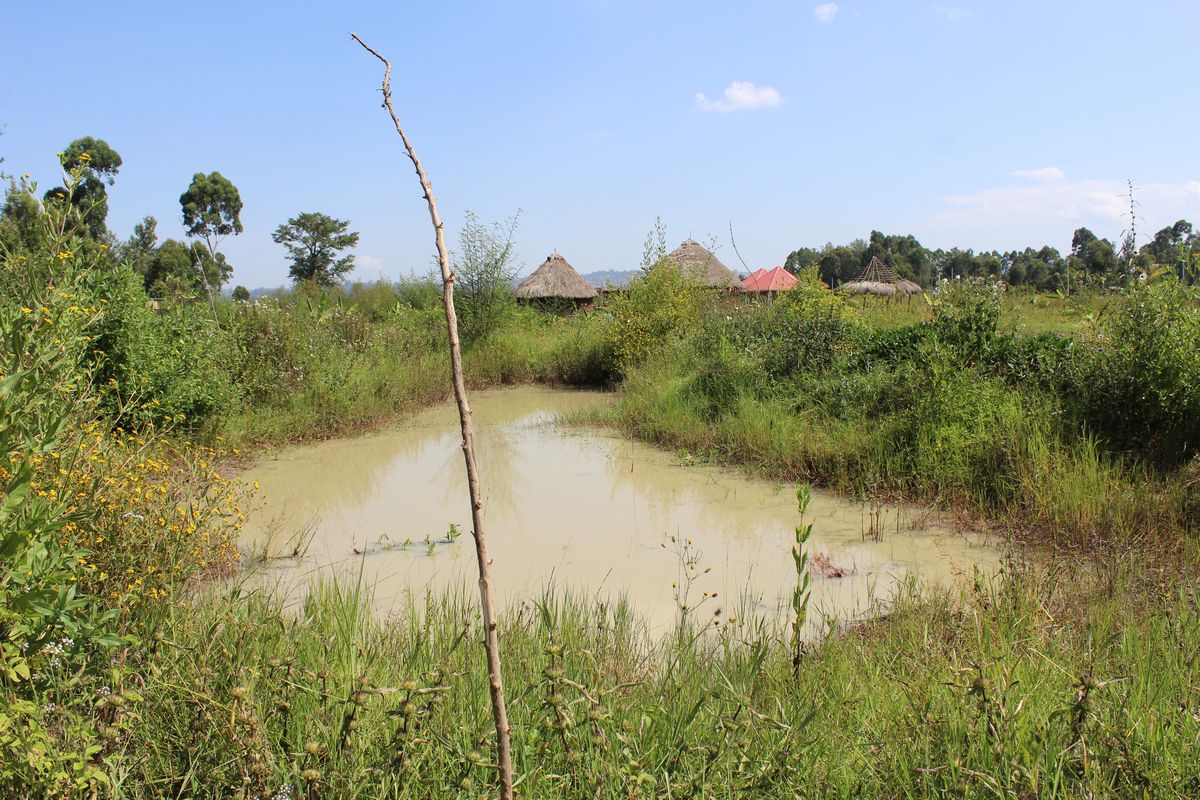
Swales
Nearby the pond we digged into the clay soil for creating swales. They are holding the water and releasing it to the roots of the plants.
Birth houses
Birth houses have been built in the garden. A place for affordable births in hygienic premises is created for the surrounding communities.
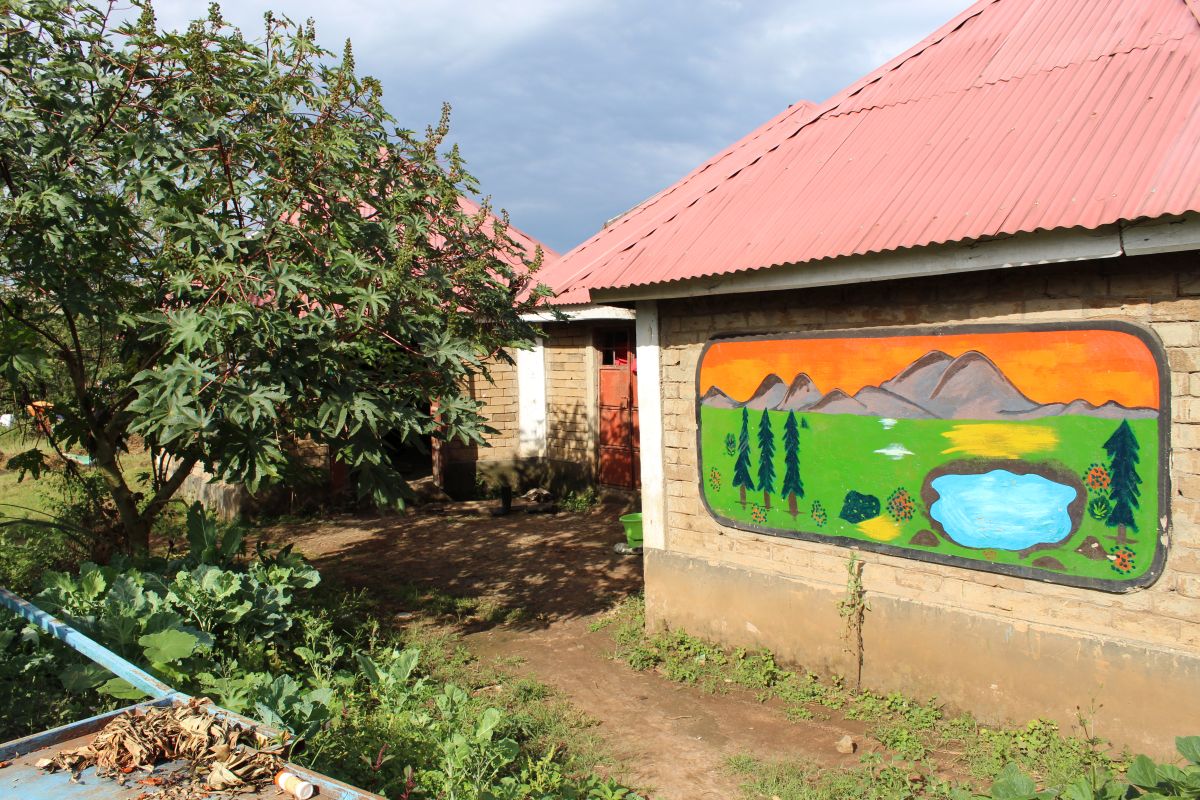
Brick machine
We do produce our own bricks. They are made out of clay soil mixed with concrete and chalk. The bricks then dry in the sun.
Compost toilet
We are collecting the human excrements in the compost toilet. After a while they can be used as “garden gold” for non food plants and trees.
Clay oven
In the kitchen hut was built clay oven. With it you can bake bread, cookies, cakes and pizza.
Kon-Tiki
With the Kon-Tiki earth oven we can produce charcoal. Charcoal can be used in many ways. For natural fertilization (in combination with “garden gold”), for cooking, for a natural fridge and so on.
